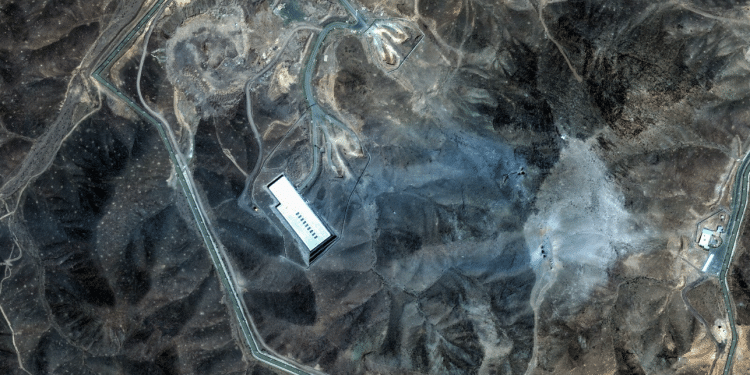A leaked intelligence assessment from the Defense Intelligence Agency (DIA) has cast serious doubt on the effectiveness of the recent U.S. airstrikes on Iran’s nuclear facilities. Contrary to the triumphant tone adopted by President Trump and Defense Secretary Pete Hegseth, the report suggests that the strikes only delayed Iran’s nuclear program by a few months at most.
The operation, dubbed “Midnight Hammer,” involved the deployment of seven B-2 bombers and the release of fourteen GBU-57 Massive Ordnance Penetrator bombs on three key Iranian nuclear sites: Fordow, Natanz, and Isfahan. While the administration claimed these strikes “obliterated” Iran’s nuclear capabilities, the DIA’s preliminary assessment indicates that the core infrastructure remains largely intact.
According to sources familiar with the report, Iran’s stockpile of enriched uranium was not destroyed in the strikes. In fact, some intelligence suggests that the material may have been moved prior to the bombing, raising questions about the timing and intelligence coordination behind the operation.
The centrifuges—critical to Iran’s uranium enrichment process—also appear to have survived the attack. One source described them as “largely intact,” undermining the administration’s narrative that the strikes had crippled Iran’s ability to produce nuclear weapons.
Despite these findings, Pete Hegseth has doubled down on the administration’s claims. He insisted that the bombs “hit exactly the right spot” and that any suggestion otherwise was politically motivated. “The impact of those bombs is buried under a mountain of rubble in Iran,” he said, dismissing the DIA report as speculative and low-confidence.
The White House has also pushed back aggressively. Press Secretary Karoline Leavitt labeled the leaked assessment “flat-out wrong” and accused the leaker of being a “low-level loser” attempting to discredit the president and the military. She emphasized that the mission was “perfectly executed” and that “everyone knows what happens when you drop fourteen 30,000-pound bombs perfectly on their targets: total obliteration”.
However, the DIA’s findings suggest a more nuanced reality. While the strikes did cause significant structural damage, they failed to collapse the underground facilities housing Iran’s most sensitive nuclear components. This has led some analysts to question whether the operation achieved its strategic objectives.
Representative Jim Himes, the top Democrat on the House Intelligence Committee, noted that it could be a long time before the full impact of the strikes is understood. He emphasized that the destruction of enriched uranium stockpiles and advanced centrifuges is difficult to confirm without on-the-ground verification.
The leak has also triggered a political firestorm. Critics argue that the administration’s exaggerated claims may have been aimed at bolstering public support or distracting from other domestic issues. Meanwhile, supporters insist that the mission was a success and that the intelligence community is being manipulated by partisan interests.
The Pentagon has launched an investigation into the leak, with Hegseth confirming that the FBI is involved. He framed the leak as a betrayal of national security and suggested that those responsible were attempting to undermine the president’s leadership during a critical moment.
This isn’t the first time battlefield assessments have diverged from political messaging. But the stakes here are particularly high, given the potential for escalation in the region and the fragile ceasefire between Iran and Israel. Misrepresenting the effectiveness of military action could have serious diplomatic consequences.

Some arms control experts have pointed out that uranium can be transported relatively easily, meaning that even a well-executed strike might not eliminate Iran’s nuclear capabilities unless timed perfectly. This raises further questions about the intelligence used to plan the operation.
The broader implications of the leak are still unfolding. It has reignited debates about transparency, the politicization of intelligence, and the role of the media in holding power to account. For now, the administration remains defiant, but the credibility of its narrative is under increasing scrutiny.
As the dust settles, the contrast between the administration’s rhetoric and the intelligence community’s findings may become a defining moment in the public’s perception of the strike. Whether this leads to policy recalibration or further entrenchment remains to be seen.
In the meantime, the leak has become a Rorschach test for American politics—interpreted through the lens of partisanship, ideology, and trust in institutions. What’s clear is that the truth, as always, is more complicated than the headlines suggest. Above Image shows 6 holes affirming the penetration of multiple 30,000 pound Bunker Buster Bombs. Satellite can not show the devastation below ground, which must be significant
More to come on this Misleading Issue
Staff Writer David R




